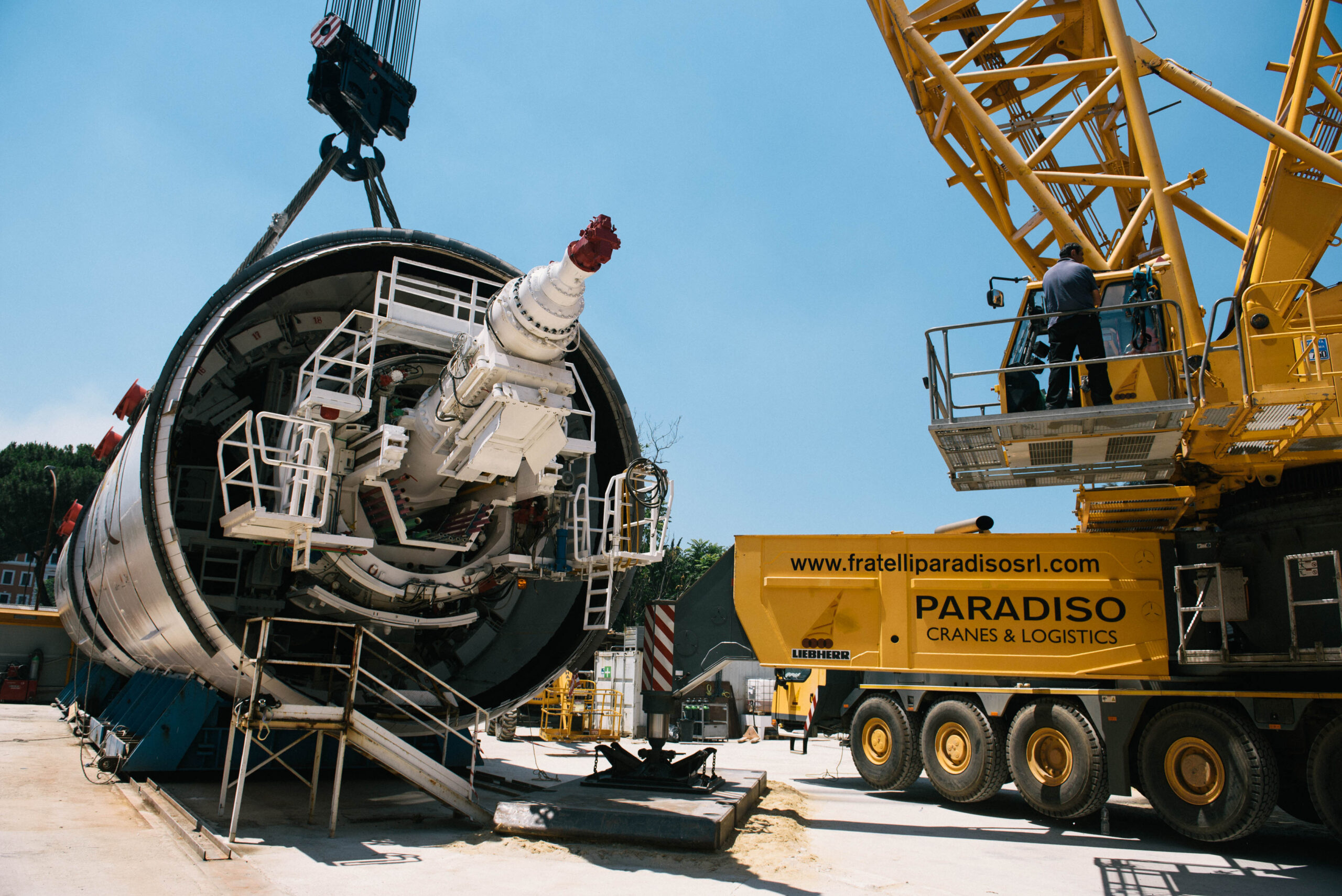The Tunnel Boring Machines (TBMs) for the construction of Line C worked 24 hours a day, and for the route alone from San Giovanni (excluded) to Piazza Venezia, they advanced at a rate of 18.2 meters per day, with peaks of 25 meters per day.
Four TBMs owned by the Metro C company were used to construct the Line C tunnels. The breakthrough of extraction, i.e., when the mechanical mole emerges from the other side of the rock having left the surrounding environment intact and connecting two points that were not previously joined, occurred for Line C within the structures. Technically, a metal ring system with a sealing gasket was used, allowing the demolition of the shaft diaphragm in the presence of an aquifer behind it.
This technique can be considered an alternative to head consolidation plugs, as it allows the entrance (as in the case in point) and exit from a Shaft or Station, through a system of gaskets that guarantee hydraulic sealing around the TBM shield providing protection against the aquifer behind the retaining walls.
This case is the first in Italy, regarding the use of this technology in the “arrival” phase of the EPBs type TBM (i.e., with earth pressure at the front) inside a shaft. The arrival phase is much more complicated than the departure phase, mainly for the following reasons:
- High precision of topographical guidance of the TBM required
- Balancing of pressure at the moment of breakthrough
The device, manufactured by MSD-HERRENKNECHT, consists, according to the sequence of installation, of the following elements:
- Ring with radial pins
- Ring with gasket
- Front closure cap.
The breakthrough operation using a metal ring requires the preparation of a detailed sequence of operational phases starting from the last excavation advances (approaching the last diaphragm to be demolished) and up to the entrance of the shield inside the sealing gaskets and relative pressurization. Specifically:
- Assembly of the elements that make up the device inside the extraction shaft.
- Advancement of the TBM in EPB mode until the milling head is inserted into the consolidated plug.
- Gradual reduction of the support pressure of the front during the last excavations and up to the demolition of the last consolidated diaphragm.
- Breakthrough and void advancement.
- Entry of the milling head inside the gasket and relative pressurization.
- Removal of the closure cap.
The use of the device offers the following advantages:
- Control of water leaks.
- Reduction of consolidations from the surface.
- Reusability of the structure.
Along the Line C route, the full passage of all structures – stations and/or shafts – was chosen, except in the cases of the Teano and Malatesta stations. This choice, which consists of making the TBM pass inside the structure when the excavation quota is at least one diameter above the cap, allows continuity in the construction of the line tunnels regardless of the progress of the structures, with obvious benefits in terms of production and independence of other construction activities. Once the structure excavation has reached the tunnel, the latter is demolished at the section inside the perimeter retaining walls.


